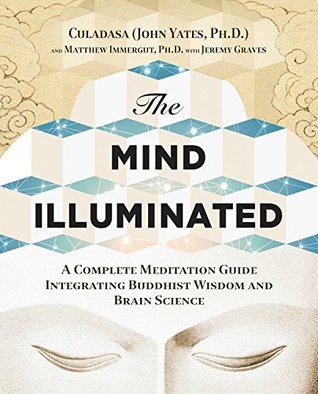More on this book
Community
Kindle Notes & Highlights
Read between
December 11, 2015 - April 16, 2017
you first need to extend periods of stable attention by actively engaging the breath,
so you can look into your mind and see wh...
This highlight has been truncated due to consecutive passage length restrictions.
Extended periods of attention and introspective awareness
allow you to correct for distractions before they cause forgetting.
Sustaining Attention through Following and Connecting
Following
identifying the beginning and end of both the in- and out-breath,
as well as the pauses separating the two.
discern each of these with eq...
This highlight has been truncated due to consecutive passage length restrictions.
When you consciously intend to discern certain features more clearly, unconscious mental processes try to help by exaggerating the breath. That is perfectly all right, as long as you don’t do it
Your intention will be to follow the breath with vividness and clarity, and to be aware of very fine
It’s possible to consistently identify between four and maybe a dozen or more sensations with each in-breath, and a somewhat smaller number for each out-breath (the sensations are subtler).
Even as you engage more closely with the breath, it’s very important to also maintain extrospective awareness
When you focus closely, the mind naturally tends to drop awareness of bodily sensations and external stimuli.
emphasizing both attention and peripheral awareness at the same time increases the total power of consciousness
More conscious power is the key to making progress in later Stages.
when you allow for the full range and content of awareness, there’s great potential for Insight,...
This highlight has been truncated due to consecutive passage length restrictions.
You’re not only observing the breath, but watching and learning from the activity...
This highlight has been truncated due to consecutive passage length restrictions.
Conne...
This highlight has been truncated due to consecutive passage length restrictions.
Cultivating Introspective Awareness through Labeling and Checking In
Cultivate introspective awareness. With introspective awareness, you’re aware of what’s happening in your mind.
Labeling
To strengthen introspective awareness, use labeling to practice identifying the distraction in the very moment you realize you’re no longer on the breath
Introspective awareness will eventually be strong enough to alert you to a distraction before forgetting happens.
Checking in
Instead of waiting for introspective awareness to arise spontaneously, check in periodically using introspective attention
Always check-in very gently and briefly, turning your attention inward to evaluate how much scattering was just occurring.
Putting the Practices Together
Pain and Discomfort
Dullness and Drowsiness
Dullness in meditation comes in many different degrees, from drowsiness to just feeling a bit “spaced out.” Drowsiness often makes an appearance at this Stage.
Working with Drowsiness
by resisting the urge and returning to the practice, you’ll usually experience a comfortable state where you can still follow the breath, though without the same intensity or vividness or clarity as before. This is called subtle dullness. It eventually leads to strong dullness, in which attention still clings to the breath, but the focus is weak and diffuse, and the sensations vaguely perceived.
If you’ve already dozed off or are very drowsy, you must first rouse the mind so you can work with dullness as it returns.
Introspective attention can alert you to dullness before you get drowsy and fall asleep. Each time you check-in to look for gross distractions, look for dullness as well.
Remember, it’s always best to recognize and correct for dullness before it gets too strong. Introspective attention, and eventually introspective awareness, are what alert you to dullness before you get drowsy and fall asleep.
Conclusion
You have mastered Stage Three when forgetting and mind-wandering no longer occur, and the breath stays continually in conscious awareness.
The ability to continuously sustain attention on the meditation object is remarkable, so take satisfaction in your accomplishment.
How Mindfulness Works
The person you are today was shaped by your past. Imprints of past experiences exert a powerful but unconscious influence on your thoughts, emotions, and behavior in the present.
Think about how much of daily life actually consists of mindless, automatic behaviors driven by unconscious
Unconscious conditioning is like a collection of invisible programs. These programs were set in motion, often long ago, by conscious experiences.
The magic of mindfulness—its power to transform you as a person—only starts working when we move beyond the first level. At the second level, by maintaining more powerful mindfulness for longer periods in daily life, we become less reactive and more intentionally present. The third level entails reprogramming the deep conditioning that has shaped our personality, and only occurs in meditation. The fourth level is the radical reconditioning of the innate tendencies that create all our suffering, and only occurs through Insight experience
Level One: Moderating Behavior
Staying mindful means you’re calmer, don’t react so quickly, or get distracted by your own emotions. With mindfulness you recognize more options, make wiser choices, and take control of your behavior.
Level Two: Becoming Less Reactive and More Responsive
The true “magic” of mindfulness is something completely different, producing extraordinary spiritual and psychological
Being truly mindful of your reactions and their consequences alters how you react in the future. Whenever something triggers one of your “invisible programs,” it’s an opportunity to apply mindfulness.


